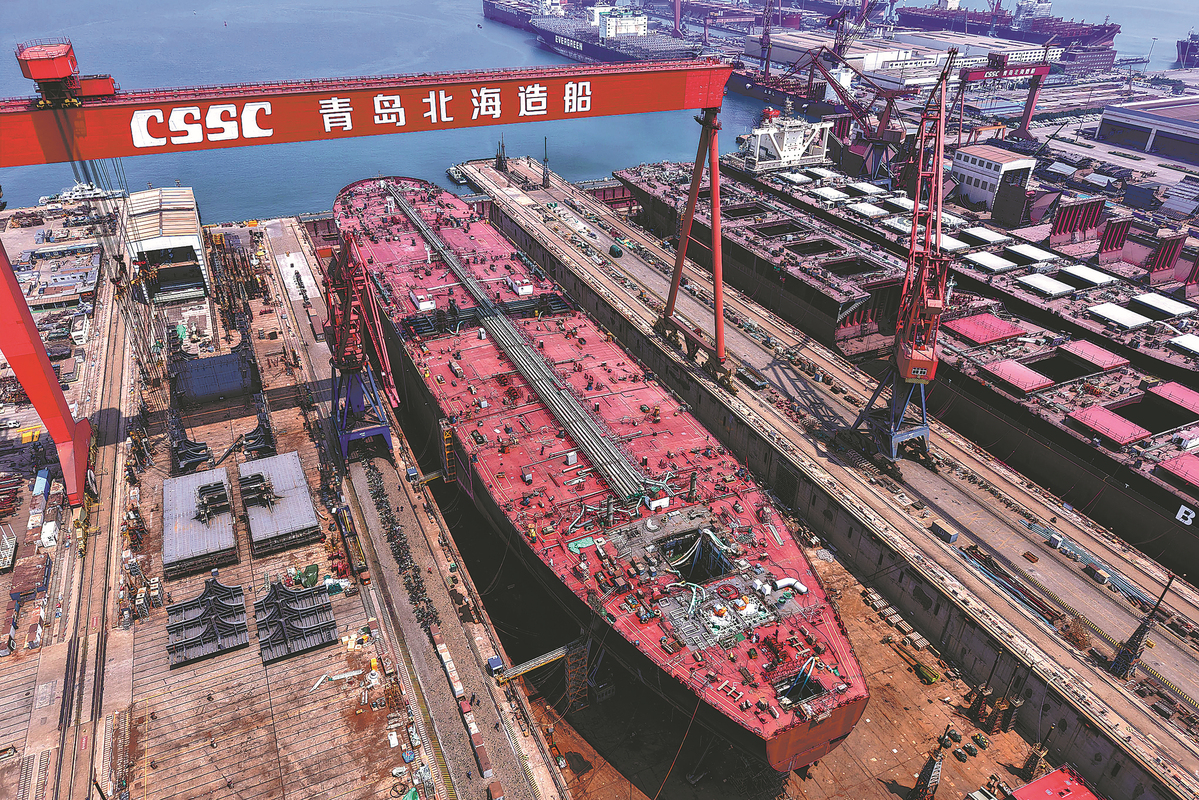CSSC to boost shipbuilding clout with a mega merger
Shipbuilder to be world's largest by assets following union with CSIC


The long-anticipated share-swap merger between China CSSC Holdings Ltd (CSSC) and China Shipbuilding Industry Co (CSIC) will make CSSC the world's largest listed shipbuilder by assets and revenue, said market watchers on Monday.
CSSC and CSIC, both State-owned enterprises, were merged into China State Shipbuilding Corp Ltd in 2019. The two firms halted trading of their A-shares last week, a further step of integration following their joint restructuring.
Approved by the China Securities Regulatory Commission, the country's stock market regulator, CSSC will issue new A shares to all CSIC shareholders in exchange for their existing stakes, making it the largest absorption merger in the history of China's A-share market.
Based on 2024 financial data estimates, CSSC will have total assets exceeding 400 billion yuan ($55.7 billion) and revenue surpassing 130 billion yuan, after this share-swap merger, ranking the largest of its kind globally in terms of asset size, revenue scale and order backlog.
Once the deal is completed, CSSC's operating costs are expected to fall by 8 to 10 percent, while its market share in high-end ship types such as liquefied natural gas carriers and mega container ships is likely to increase further, with its valuation expected to rise, said a study released by CITIC Securities.
China's shipbuilding industry, after this share-swap merger, will see an optimized industrial layout, with unified coordination and management of shipyards and more rational allocation of resources, said Ding Rijia, a professor of industrial economy at China University of Mining and Technology-Beijing.
Even though CSSC and CSIC merged into one group in 2019, their subsidiaries still have overlapping businesses in areas such as building commercial vessels, ship repair and conversion, and the issue of intra-industry competition has yet to be fully resolved.
"This move will help their shipyards develop competitive advantages in building various ship types, while enhancing overall capabilities in high-end vessel manufacturing," said Ding.
Xu Kai, a researcher specializing in shipping operations at Shanghai Maritime University, said that in the future, CSSC will be able to integrate high-quality assets from CSIC, including Dalian Shipbuilding Industry Co and Wuchang Shipbuilding Industry Group Co, and combine their strengths in research, design and manufacturing to drive synergies and optimization in shipbuilding, repair and support businesses.
Xu said that China's shipbuilding industry has steadily advanced the development of green and high value-added vessels, strengthened the resilience of its internal supply chains, and leveraged mergers to create synergistic growth in recent years.
In the first half, China's shipbuilding completions, new orders and order backlog accounted for 51.7 percent, 68.3 percent and 64.9 percent of the global market share, respectively, said the Beijing-based China Association of the National Shipbuilding Industry.
From January to June, Chinese shipyards exported $24.5 billion worth of vessels, including container ships, bulk carriers, chemical and oil tankers, heavy-lift vessels and vehicle carriers, surging 18.6 percent year-on-year, said the General Administration of Customs.
CSSC Chengxi Shipyard Co, a subsidiary of China State Shipbuilding Corp Ltd, is ramping up production as it works through orders booked until 2029 amid growing demand for high-tech vessels.
The Jiangyin, Jiangsu province-based shipyard saw its export value jump more than 20 percent on a yearly basis to $704 million in the first six months, said Nanjing Customs.
Wang Qing, the company's deputy operations director, said the company has delivered seven bulk carriers with greener, smarter in-house solutions this year, highlighting advanced environmental technologies, high performance, large capacity and strong adaptability. These ships have gained strong recognition in international markets.
"Both the main and auxiliary engines are equipped with denitrification systems, enabling them to meet the latest emission requirements set by the International Maritime Organization, making them highly popular in European markets and Australia," said Wang.
zhongnan@chinadaily.com.cn




































